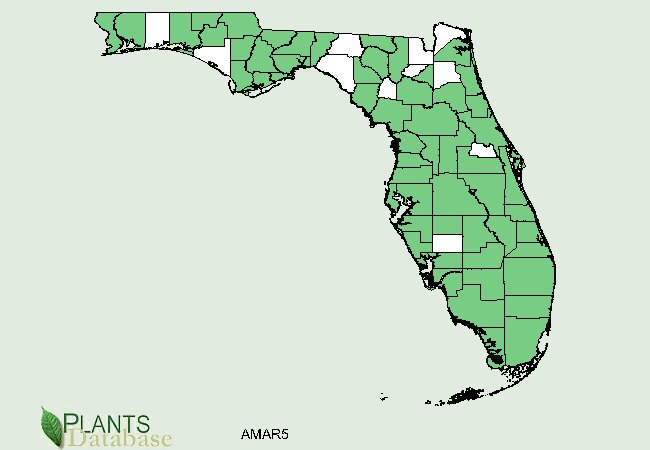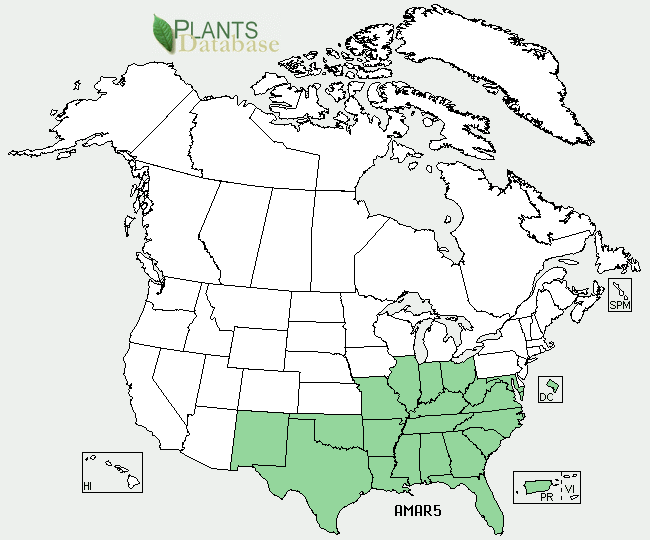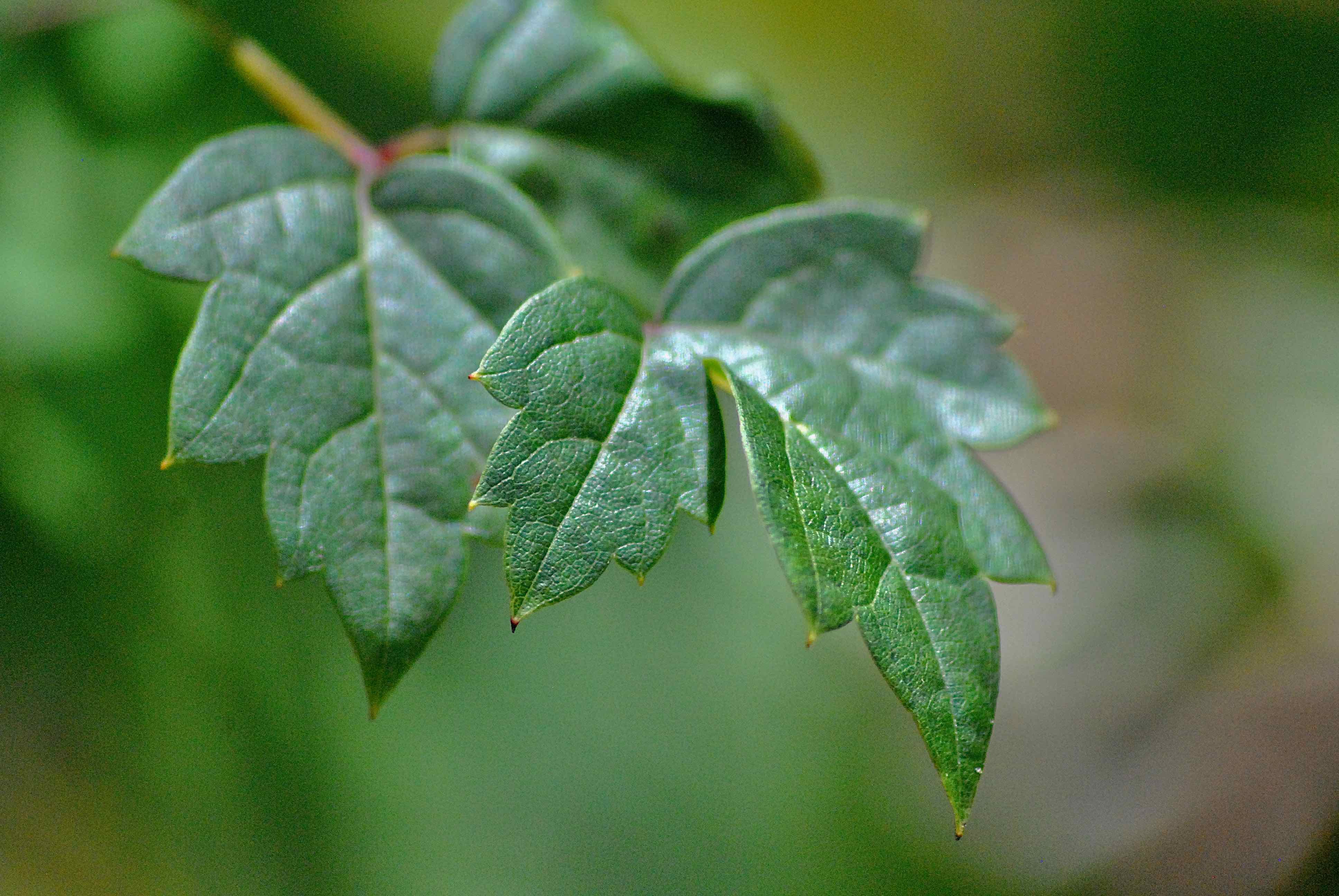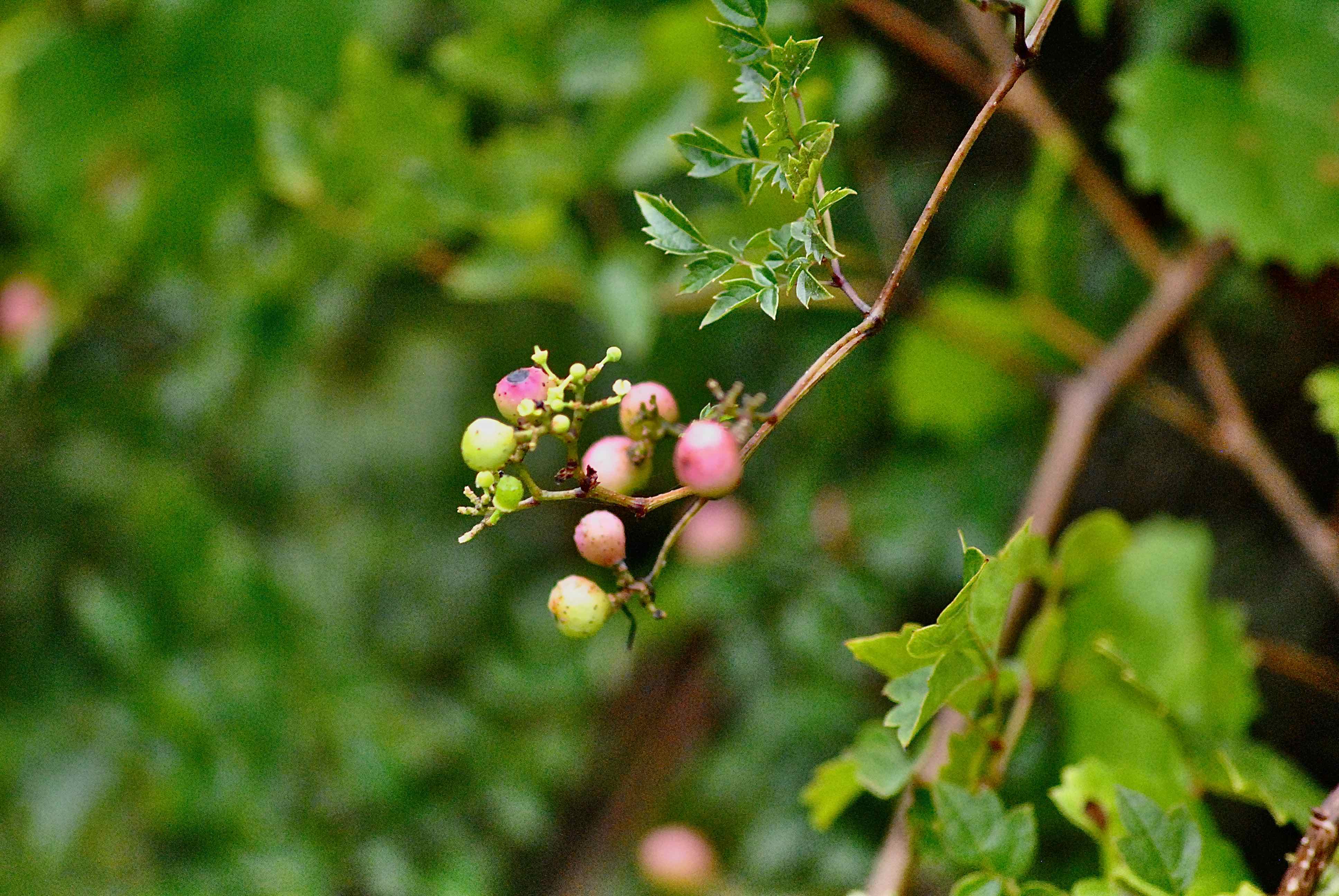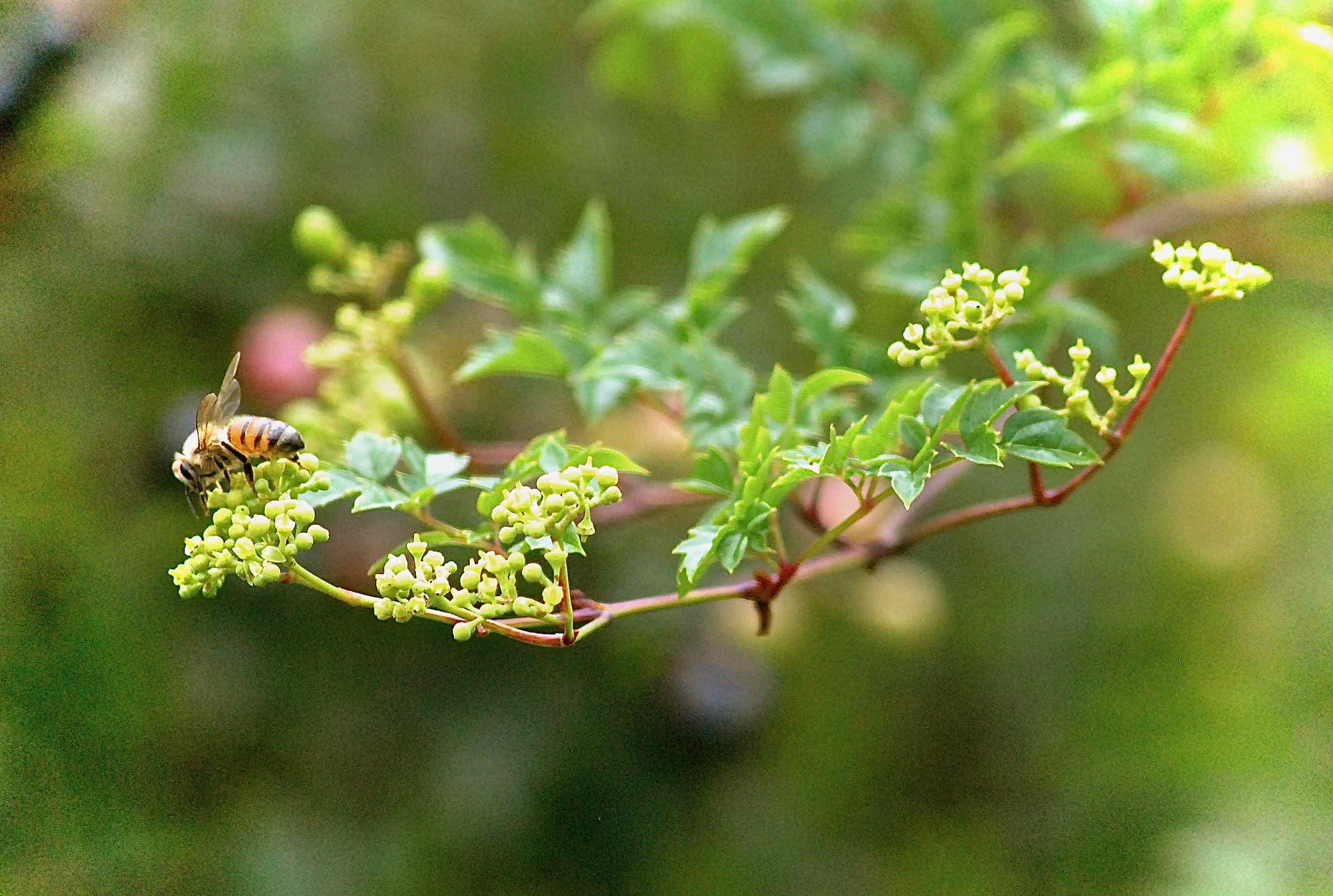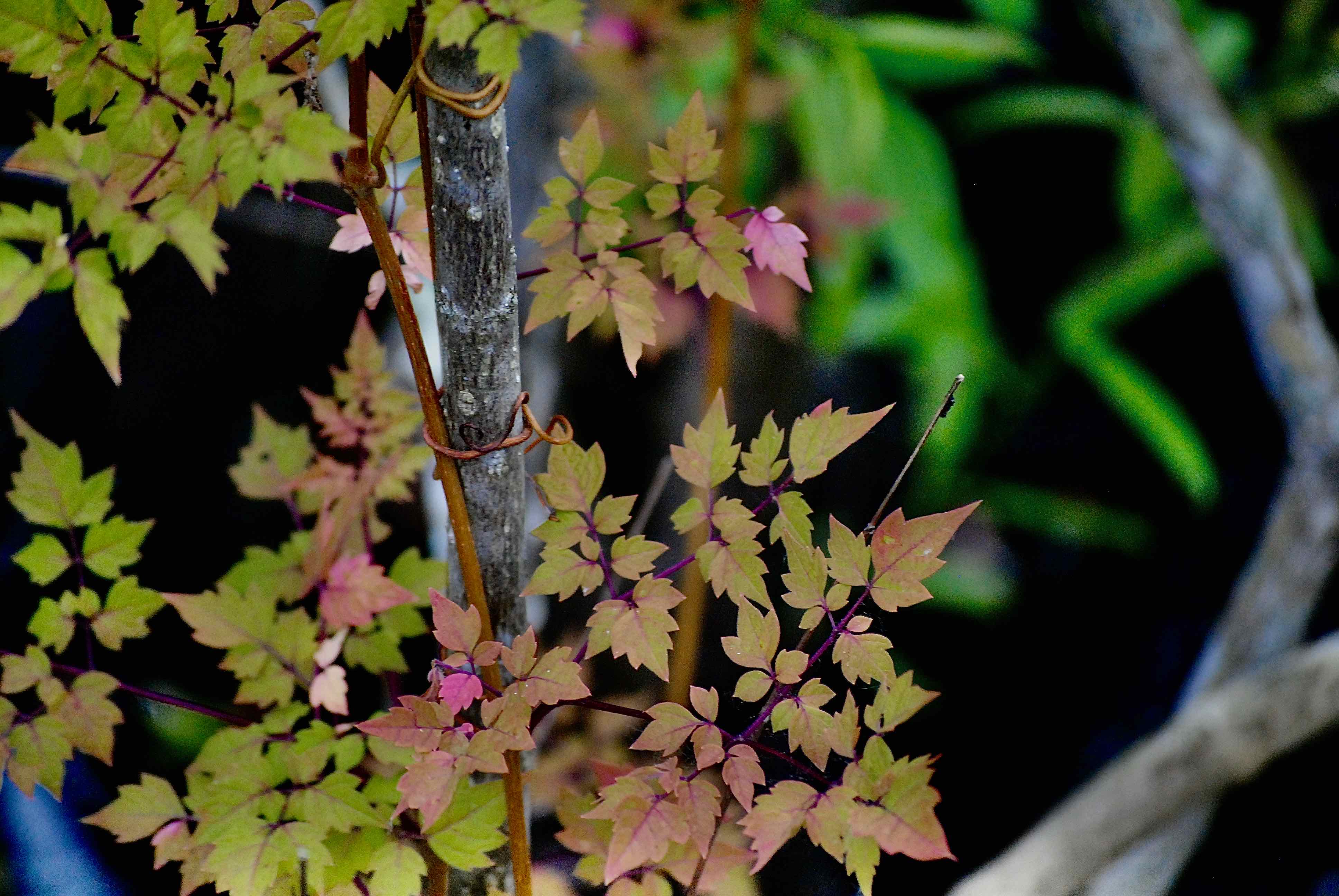
Peppervine, photographed at Juno Dunes Natural Area West Tract, Juno Beach, Palm Beach County, in March 2014.
Peppervine, Ampelopsis arborea, is a member of the grape family, or Vitaceae as it's known to scientists, and a bit of a black sheep as well.
It's not a bad looking plant, and birds and mammals are attracted to the fruit it produces, but it is a fast and aggressive grower that can overtake cultivated crops, particularly fruit and nut trees, in parts of its natural range. Its fruit, which turns black when ripe, is generally considered inedible to humans, however.
It's a shrubby, woody vine and can be 35 feet long or more — up to 72 feet, according to the Lady Bird Johsnon Wildflower Center. The leaves are compound, with two or three leaflets. It can be deciduous or semi-deciduous — meaning it can drop all or some of its leaves in winter. The stems have a touch of red in them. In some ways, peppervine reminds us of Virginia creeper, another native vine with woody stems that can be a bit of a pain in the butt to us humans. And like Virginia creeper, its often mistaken for poison ivy.
It is a good ground cover, pest resistant and will climb trellises and fences. But it will also overtake and overgrow anything in its path, including your garden. Peppervine puts out greenish white flowers in spring and summer that give way to clusters of berries in the fall. The flowers attract pollinators, including honey bees, as seen in the bottom right photo. The berries don't ripen at the same time, so a cluster will be multi-hued, from green to red to blue to black, adding to the plant's visual interest. But again, it's so aggressive that it's not recommended as a landscape plant.
Peppervine is a native of Florida, found throughout most of the state and most of the eastern and central United State as far north as Illinois and as far west as New Mexico. It's found in marshes, swamps, hammocks and the edges of ponds. It's also found in Cuba, where it's considered an invasive, although information is sketchy. Peppervine has been grown in England since 1700, but there are no records of it growing in the wild there.
A 2006 report by the Southern Weed Science Society found peppervine to be the seventh most common weed in Louisiana's fruit and nut orchards, and the fourth biggest pest. It ranked seventh in both categories for the state's citrus industry. The report did not include Florida. Peppervine is not listed as a noxious weed or invasive by any agency or state, as far as we can tell.
There's some dispute over whether peppervine is poisonous. Some say yes, some say no. One source says the berries contain calcium oxalate, which can cause a numbing sensation in the mouth and throat. It's the same stuff that puts the dumb in dumb cane, the house plant also known as dieffenbachia that affects the muscles of the throat. It also can cause kidney stones. But calcium oxalate can be removed by squeezing the juice out of the berries and mixing it with a small amount of water. The question is whether the procedure is worth it, because the juice doesn't taste very good at all. According to one reference, the the juice of Ampelopsis species "shouldn't be put in the mouths of humans," considering the quantity of higher quality fruit available in the wild.
On the other hand, the University of North Carolina Extension Office says peppervine is "questionably poisonous." It says the toxicity level is low but it advises caution for anyone wanting to sample the stuff. Some people actually like peppervine berries, one source calling them sweet and grape-flavored, but still warning of their calcium oxalate content. Still others suggest that the berries can be cooked, used to make jam, jelly or even fermented into wine. They can also be used in pies.
Ampelopsis species contain a chemical with medical potential called dihydromyricetin, or ampelopsin, that, in a bit of irony, might have promise as a cure for alcohoism. It also might provide a treatment for a common form of liver cancer that does not respond well to chemotherapy. In folk medicine dihydromyricetin has been used to improve liver health. Most of the research has involved plant species other than peppervine, however.
Peppervine is known to cause contact dermatitis. In fact one of its common names is cow itch. It's also known as buck vine.
Juno Dunes Natural Area West Tract
Click on photo for larger image
U.S. Department of Agriculture Distribution Maps
